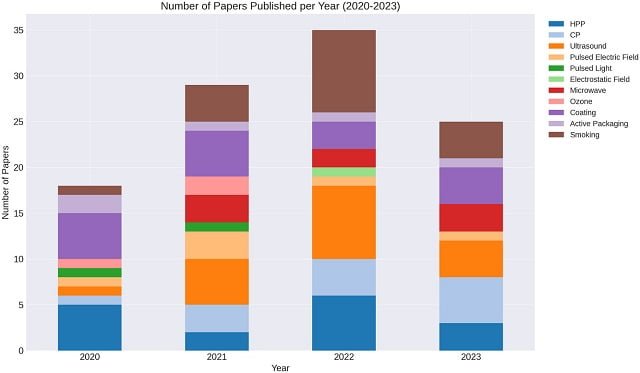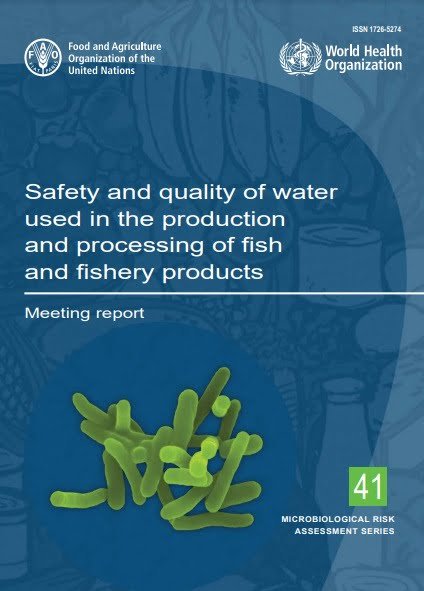
Imagine fish and seafood staying fresh for weeks, full of flavor and nutrients, sustainably sourced, and carefully processed. This is not a futuristic fantasy but the thriving reality of the fishing industry, thanks to a wave of innovative processing technologies. For centuries, preserving seafood has been a constant challenge, but science and technology now promise a paradigm shift for this vital food source.
Ensuring the freshness, safety, and sustainability of fish and seafood throughout the value chain is crucial, and this is where innovative processing technologies come to the forefront.
A scientific article published by researchers from the CAISIAL Centre, University of Naples Federico II, delves into the exciting world of emerging technologies revolutionizing seafood processing. They explore a hidden treasure of techniques, from powerful high-pressure processing (HPP) to versatile edible coatings, each offering unique advantages and addressing specific challenges.
Challenges in the fishing industry
The fishing industry generates over $200 billion annually and employs more than 56 million people worldwide. However, this growth comes at a cost. Overfishing, habitat destruction, and pollution cast a dark shadow over the industry’s future.
- Concerns about overfishing and sustainability: Our insatiable appetite for seafood has pushed many fish populations to the brink.
- Food safety and quality: Bacterial contamination and unapproved medications lurk in the shadows, endangering consumer health.
- Evolving consumer demands: Today’s consumers crave fresh, minimally processed, and nutritious choices.
Emerging technologies
Here’s just a glimpse of emerging technologies for fish and seafood processing. Each method offers unique advantages but also presents specific challenges. Cost-effectiveness, scalability, and regulatory hurdles are some obstacles that must be overcome for the widespread adoption of each technology for fish and seafood processing.
Scientists identified the following emerging technologies: HPP, ultrasound, PEF, PL, CP, vacuum cooking, innovative ozone treatments, innovative smoking technology, microwaves, FEVI, active packaging, and edible coatings. Here’s a brief description of some of them:
- High-Pressure Processing (HPP): This technology uses high pressure to inactivate microbes and enzymes causing spoilage, extending the shelf life without compromising nutritional quality or flavor. HPP makes fish and seafood safer, fresher, and ready to enjoy weeks later.
- Cold Plasma (CP): Eliminates pathogens and extends shelf life while preserving delicate textures and minimizing nutrient loss.
- Pulsed Electric Field (PEF): This electric pulse alters microbial cell membranes, ensuring food safety while preserving the natural goodness of seafood.
- Ultrasound: Imagine gentle sound waves radiating through a tuna fillet, softening its texture and improving digestibility. Ultrasound technology has incredible potential to enhance the texture and shelf life of various seafood products.
- Edible coatings: These biodegradable protectors made from natural materials like chitosan and alginate add an extra layer of protection against spoilage and oxidation, extending shelf life and reducing waste.
Benefits of emerging processing technologies
The benefits of the technologies described in the study extend beyond the consumer’s plate. By reducing waste and improving efficiency, they contribute to a more sustainable fishing industry, minimizing environmental impact.
On the other hand, these technological innovations create new opportunities for small producers and processors, fostering economic growth and strengthening coastal communities.
Stay Always Informed
Join our communities to instantly receive the most important news, reports, and analysis from the aquaculture industry.
In summary, the potential benefits of emerging fish and seafood processing technologies include:
- Extended shelf life: Say goodbye to food waste! These technologies can significantly extend the shelf life of seafood, reduce waste, and ensure fresh, high-quality products for consumers.
- Improved food safety: No more worries about harmful bacteria. Technologies like HPP and PEF effectively eliminate pathogens, making seafood consumption safer.
- Sustainable practices: Many of these methods are energy-efficient and environmentally friendly, contributing to a more sustainable fishing industry.
- Unlocking culinary potential: From improved texture to enhanced flavor, these technologies can unlock new culinary possibilities, making seafood even more delicious and versatile.
Closing the gap between scientific advancements and industry adoption
However, the innovative technologies described in the study are not without challenges. Profitability, scalability, and regulatory hurdles remain obstacles to widespread adoption. Consumer acceptance also plays a crucial role, requiring education and awareness of the benefits of these innovative methods.
Thus, collaborative efforts between researchers, processors, and consumers are crucial to ensure the responsible development and implementation of these technologies. Working together, we can chart a course toward a future where delicious, safe, and sustainable seafood delights our taste buds while preserving the ocean’s generosity for future generations.
According to the study, future research and development of the described technologies should focus on:
- Technological refinement: Making these technologies more cost-effective, scalable, and user-friendly.
- Consumer education: Raising awareness about the benefits of these technologies and building consumer confidence.
- Regulatory frameworks: Developing clear and efficient regulations to facilitate the safe and responsible use of these technologies.
Conclusion
The future of the fishing industry lies in embracing this technological revolution, perfecting existing methods of fish and seafood processing, and exploring new frontiers. Understanding consumer perspectives and navigating regulatory frameworks will be key to unlocking the full potential of these innovative techniques.
By adopting innovation, implementing responsible management practices, and fostering consumer understanding, the fishing industry can chart a course toward a prosperous and sustainable future. Let’s work together to ensure that the ocean’s generosity continues to feed future generations.
The study was funded by the Italian Ministry of Agriculture, Food Sovereignty, and Forestry (MIPAAF), through the project: “Development of new ready-to-cook and ready-to-eat products starting from tuna, anchovies, and bivalve mollusks.”
Contact
Antonio Luca Langellotti
CAISIAL Centre
University of Naples Federico II
Portici, Italy.
Email: langello@unina.it
Reference (open access)
Russo, G. L., Langellotti, A. L., Torrieri, E., & Masi, P. (2024). Emerging technologies in seafood processing: An overview of innovations reshaping the aquatic food industry. Comprehensive Reviews in Food Science and Food Safety, 23, 1–30. https://doi.org/10.1111/1541-4337.13281
Editor at the digital magazine AquaHoy. He holds a degree in Aquaculture Biology from the National University of Santa (UNS) and a Master’s degree in Science and Innovation Management from the Polytechnic University of Valencia, with postgraduate diplomas in Business Innovation and Innovation Management. He possesses extensive experience in the aquaculture and fisheries sector, having led the Fisheries Innovation Unit of the National Program for Innovation in Fisheries and Aquaculture (PNIPA). He has served as a senior consultant in technology watch, an innovation project formulator and advisor, and a lecturer at UNS. He is a member of the Peruvian College of Biologists and was recognized by the World Aquaculture Society (WAS) in 2016 for his contribution to aquaculture.




